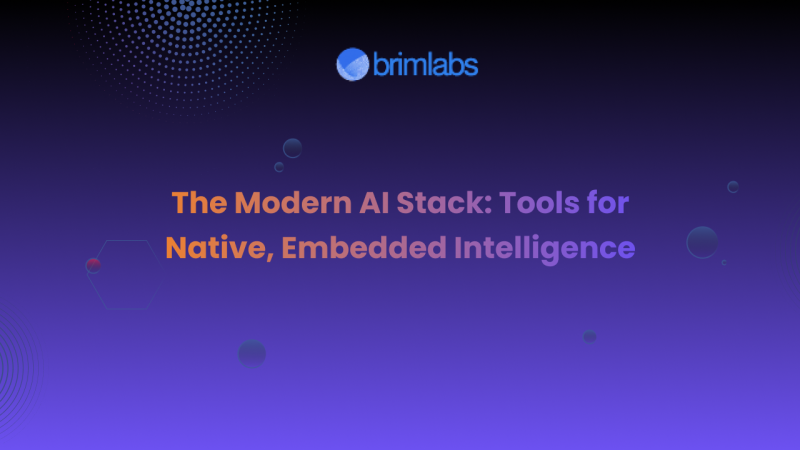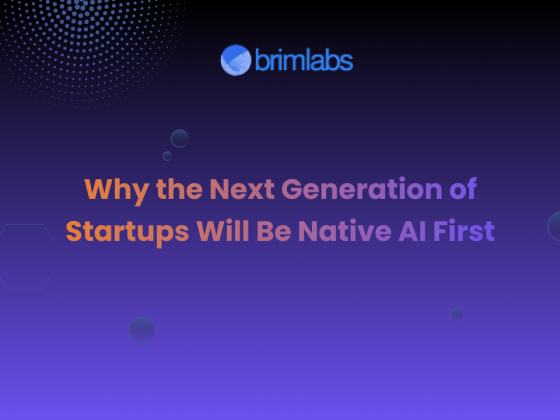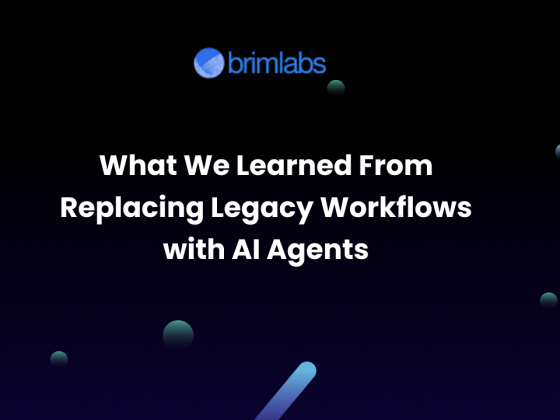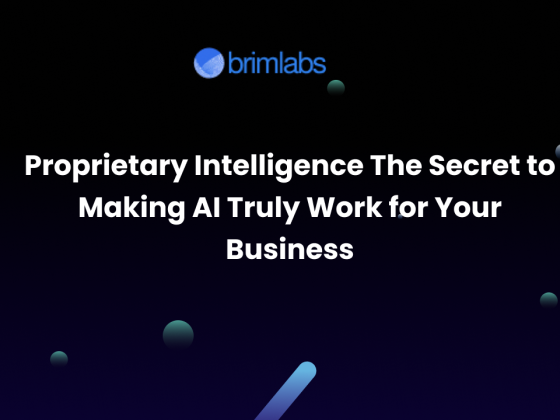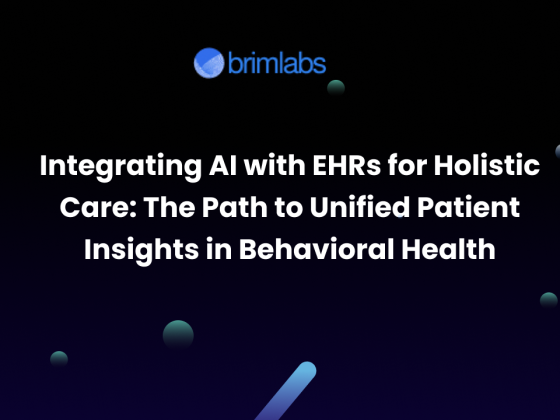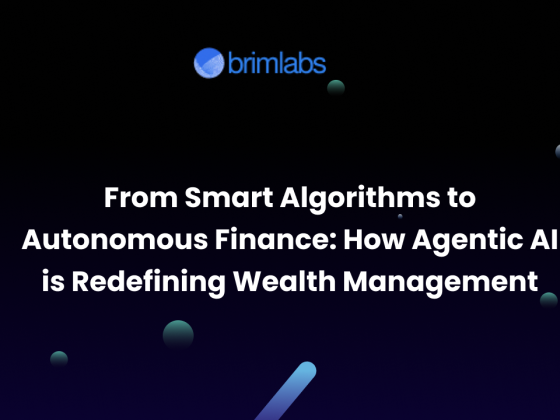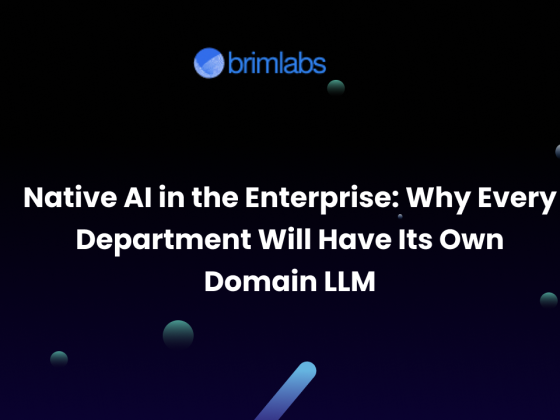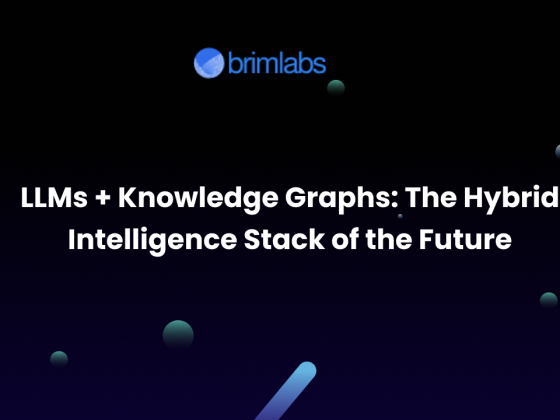Why Native AI Demands a New Stack
In 2025, building AI products isn’t just about plugging in an LLM or calling OpenAI’s API. The most impactful AI tools we’re seeing today, from AI copilots to intelligent automation, are native by design. They ingest internal data, reason in real time, and are deeply embedded in core user flows. That shift requires a new stack.
Legacy SaaS and API-first setups won’t cut it anymore. Teams are now asking: What’s the right way to build natively AI-driven software in 2025?
At Brim Labs, we’ve helped early-stage to enterprise teams architect and ship AI-native products. Here’s a breakdown of the stack we recommend, what to consider when choosing components, and why it’s all changing, fast.
The Native AI Stack: Layer by Layer
Let’s break it down from bottom to top.
1. Data Layer: Where Native Starts
- Data Lakes / Warehouses: Snowflake, BigQuery, or Lakehouse-style systems like Databricks are foundational for scalable ingestion.
- Vector Databases: Pinecone, Weaviate, Qdrant, or OpenSearch for fast semantic retrieval.
- Document Loaders: Unstructured, LangChain’s Loaders, or custom pipelines built with LlamaIndex and HuggingFace Datasets.
- Data Cleaning + Chunking: LangChain TextSplitters, RecursiveCharacterTextSplitter, or in-house strategies based on schema type.
Why it matters: Without structured and retrievable internal data, you’re just building a wrapper around ChatGPT.
2. Foundation Model Layer: Plug and Play + Fine-Tuned
- Hosted LLMs: OpenAI GPT-4o, Anthropic Claude 3, Mistral, Gemini 1.5.
- Open Source Models: Llama 3, Mixtral, Phi-3, or Falcon for private deployments.
- Fine-tuning Options: LoRA-based tuning (QLoRA or PEFT) for vertical expertise or user personalization.
Many teams are adopting dual LLM strategy, fast, cheap inference model + a second high-performance fallback for complex queries.
3. Retrieval + Memory: Brains of Your Native Agent
- RAG Frameworks: LangChain, LlamaIndex, Haystack, or custom-built.
- Memory Architectures: Episodic memory (short-term) vs. long-term vector stores. Popular frameworks like CrewAI and AutoGen now support hybrid memory.
Retrieval should include structured (PostgreSQL) and unstructured (PDFs, docs) data. Use metadata tagging aggressively for ranking relevance.
4. Orchestration + Agents: Moving Beyond Chatbots
- Agent Frameworks: LangGraph (LangChain), CrewAI, AutoGen, or Meta’s OpenAGI.
- Workflow Tools: Temporal, Airflow, Prefect — often combined with agent execution to orchestrate multi-step processes.
- Multi-Agent Systems: top teams run parallel agents (planner, executor, QA checker, database writer) for critical tasks.
5. Tooling + Actions: Your Agents Need Hands
- Tool Callers: OpenAI Tool Use, Function Calling, LangChain’s Toolkits, or CrewAI Actions.
- External Tool Integration: CRM APIs, databases, dashboards, schedulers.
- Internal APIs: Teams are wrapping business logic (pricing engine, compliance checks) into callable tools for agents.
6. Security + Governance: No Longer Optional
- Access Control: Attribute-based access (ABAC), Row-level security on retrieval.
- PII Redaction: Tools like Presidio, built-in PII detection in LangChain or Anthropic Claude.
- Auditability: Prompt logs, response logs, model version tracking via platforms like Humanloop, Arize AI, or W&B.
For regulated sectors (healthcare, fintech), native AI governance is table stakes.
7. Frontend + UX: Where It All Comes Together
- UI Libraries: Tars, ReactFlow, shadcn/ui, Tailwind for fast prototyping.
- Voice + Multimodal: Whisper, ElevenLabs, GPT-4o vision for multimodal AI experiences.
- Prompt UIs: Editable instructions, memory toggles, agent visibility — increasingly expected by users.
UX Shift: Instead of “chat with AI,” users now expect invisible intelligence embedded in each workflow.
What’s Changing in 2025
- Closed vs Open LLMs: Open models like Llama 3 now rival proprietary ones in benchmarks. Many startups are moving workloads in-house.
- Composable Agents: Static RAG is being replaced by dynamic, autonomous agents that plan, recall, and act across complex tasks.
- AI-Native Design Thinking: Product teams now co-design user journeys with agents from day one, not as a plugin afterthought.
Key Considerations for Tech Teams
- Speed vs Control: Hosted LLMs give speed; open source gives compliance and extensibility.
- Retrieval Hygiene: Junk in, junk out. Build strong pipelines with fallback layers and confidence thresholds.
- Agent ROI: Not every use case needs autonomy. Some are better served with smart autocomplete or lightweight RAG.
What We Recommend at Brim Labs
When we build AI-native products with partners, our go-to approach involves:
- LLM + RAG-first architecture: Prioritize fast retrieval, clean context, and fallback LLM strategies.
- Co-designed agents: Map your business workflows into agents, not just UIs.
- Secure, compliant data stack: Especially for fintech, healthcare, and compliance-heavy spaces.
Final Thoughts
The native AI stack is not a fixed recipe. It’s a fast-moving architecture that rewards experimentation, modular thinking, and deep understanding of your data and user flows.
In 2025, the best products won’t just use AI. They’ll be AI, natively built, tightly integrated, and always evolving.
Ready to build something native?
Let’s talk. We co-invest in products we believe in, not just with code, but with real engineering partnership. Visit https://brimlabs.ai/.

